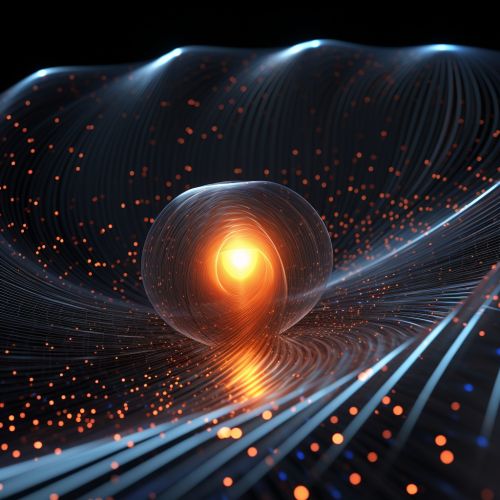Fermion
Introduction
A fermion is a type of elementary particle that follows the statistical rules defined by Enrico Fermi and Paul Dirac. Fermions are one of the two fundamental classes of particles, the other being bosons. Fermions are characterized by their half-integer spin, which results in their adherence to the Pauli Exclusion Principle. This principle states that no two fermions can occupy the same quantum state simultaneously.


Properties of Fermions
Fermions are associated with matter and have properties of mass and charge. They are the building blocks of all matter, making up protons, neutrons, and electrons - the components of atoms. Fermions are also responsible for the physical properties of matter, such as density and conductivity.
Types of Fermions
There are two types of fermions: elementary fermions and composite fermions. Elementary fermions include quarks and leptons, while composite fermions include protons and neutrons.
Elementary Fermions
Elementary fermions are the most basic building blocks of matter. They include quarks, which make up protons and neutrons, and leptons, which include electrons, muons, tau particles, and neutrinos.
Composite Fermions
Composite fermions are made up of several elementary particles. The most common examples are protons and neutrons, which are made up of three quarks each.
Fermions and Quantum Mechanics
Fermions play a crucial role in quantum mechanics. The Pauli Exclusion Principle, which is a fundamental principle of quantum mechanics, applies specifically to fermions. This principle states that no two fermions can occupy the same quantum state simultaneously. This is why electrons in an atom fill up the energy levels one by one, rather than all occupying the lowest energy level.
Fermions in Particle Physics
In particle physics, fermions are the particles that make up matter. They are the constituents of atoms and molecules and are responsible for the physical properties of matter. The study of fermions and their interactions is a fundamental part of particle physics.
Fermions in Astrophysics
Fermions also play a crucial role in astrophysics. For example, the pressure exerted by fermions in the form of electrons is what prevents white dwarf stars from collapsing under their own gravity. This is known as electron degeneracy pressure and is a direct result of the Pauli Exclusion Principle.
